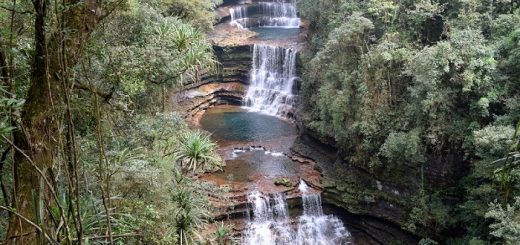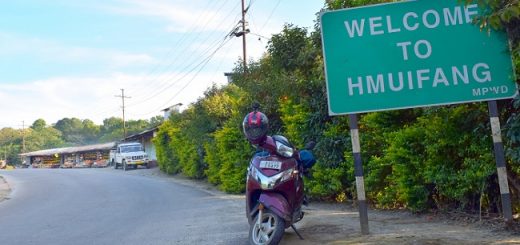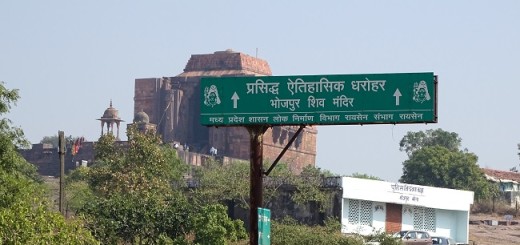List Of Dangerous Water Crossing En Route Ladakh And Spiti Valley
The Ladakh Valley and the Spiti Valley are travelers and Biker’s Paradise in India. Thousands of travel enthusiasts who love long and thrilling drives visit them every year. They have some of the highest motorable roads in the world, serving as major attractions en route. While driving on mountain passes and highways adjacent to deep gorges is thrilling, it is the water crossing for which these rides are most remembered. As the Ladakh Valley and the Spiti Valley lay close to the India-China border, surrounded by mountain ranges, construction of roads is a mammoth task. Although Border Road Organization(BRO) has done some excellent work due to which riding on these highways is bliss, a few water crossings posses a significant challenge. In my opinion, these water crossings are the most memorable part of a trip to Ladakh Valley or the Spiti Valley. I have been to some of the toughest roads in India, like the Sach Pass, Spiti Valley, Leh Ladakh, and Chanshal Pass. During my Sixty Days Ride to North-East India, I also rode on some of the worst roads in northeastern India. From my experiences, I can say that it is the water crossings on any route, which makes the ride challenging and memorable. After completing my Winter Ride to Spiti Valley, I thought to compile a list of significant water crossings in both the valleys of India. Therefore this article will cover a list of water crossing in Leh-Ladakh and Spiti Valley. If I missed any particular water crossing, kindly let me know via the comment or message, and I would love to expand the article.
Also Read: Places In India on The International Border
Qucik Navigate:
What Exactly Are The Water Crossings or Nallahs?
The water crossing or Nallah (in local language) is a stretch where the asphalted road gets submerged under the massive flow of water. The water from the melting of snow causes the degradation of the road. Moreover, the continuous flow of the water erodes the tarmac and leaves behind the boulders and potholes. It is an ideal way to define a water crossing on the hills. Yet anyone who has encountered a water crossing knows that there is a stark difference between the definition and the reality. Crossing these nallas is a necessary task to proceed further, but they possess a serious challenge to anyone trying to pass them. The problem gets multiplied if one is traveling on a motorcycle rather than via a car. Maneuvering a vehicle on the turbulent flow of water in summers and hard black ice in winters requires expertise, and not everyone posses these skills. Moreover, a few of the water crossings remain close during the winter season due to the heavy snowfall these regions receive.
Also Read: A Ride On Haflong-Silchar Road: Worst In North-East India
List of Famous Water Crossing In Leh-Ladakh Route
The Ladakh valley doesn’t need any introduction. It is one of the most visited tourist destinations in India, known by many sobriquet Land of High Passes. While riding on high passes, it fun, the water crossing en route Ladakh Valley are equally famous. There are many water crossing in Leh and Ladakh valley, some of which are:
Also Read: A List of All Possible Way To Reach Leh-Ladakh
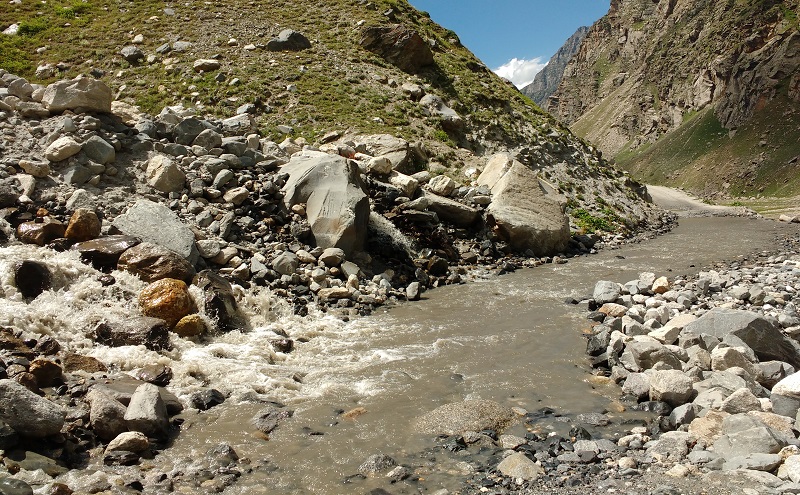
Water Crossing At Zoji La
The Zoji Pass connects the Srinagar Valley to the Drass valley, and it is one of the highest passes on the Srinagar-Leh Highway. Zozi La lies at an elevation of 3528 meters above sea level and remains close during the winter season. At the onset of summers, the snow melts, paving the way for water streams to occupy the road. Although the bulk of the route on Zoji La is asphalted, the top of the pass still has a bad stretch. The massive convoy of trucks carrying essentials commodities further deteriorates the road. If you are visiting Zoji La in April and May, you will encounter heavy snow at the top. While during July and August, the stretch is mostly dominated by meting water from nearby peaks making Zoji La a dangerous place to cross.
Water crossings between Tangtse Village to Spangmik Village
Anyone who has been to the Pangong Tso knows about this route. While the majority of the road from Leh City to Pangong Lake is in good condition (except at Chang La), the path worsens as Pangong lake approaches. During my trip to Ladakh, and particularly to Pangong Tso, I remember crossing 10-15 small and big water crossings. The smaller water crossings were easy to pass, but the bigger ones were a major huddle. In one water crossing, I tried crossing it by accelerating my motorcycle, and it left me drenched with the freezing water. Similarly, around the Spangmik village, there are a few more crossings between the Phobrang village and the Spangmik.
Also Read: A Ride On Laumding Haflong Highway In Assam
Water Crossing between Pangong Tso and Tso Moriri
The water crossing on this route is one of the most memorable water crossings of my life. The ride from Pangong Tso to Tso Moriri is one of the challenging routes in India, and those who rode on this stretch know the challenges it posses. Usually, in the case of water crossings, the water comes from the melting of snow from the nearby peaks, but between Pangong Tso to Tso Moriri, it is the over flooding Indus River which possess the challenge. From Pangong Tso to the Chushul Village, there are a few water crossing, but the majority of the route is scenic ( thanks to a ride parallel to the Pangong Lake). The real challenge arises between the Mood Village and the Nyoma Village, as in this section, the Indus River flows parallel to the road. I visited Leh-Ladakh in August when it is Monsoon Season in India. During that time of the year, most of the rivers flow above their danger mark, and Indus River was no exception. At Loma Bend, the entire road was submerged in the overflowing water of the Indus River, and there was no sign of the road anywhere. It took me 40 minutes to decide if I want to go further or return to Pangong Lake.
Water Crossing at Sarchu and Zing Zing Bar
Sarchu is a midway village on Manali-Leh Highway and a night-halt point for the majority of travelers visiting Leh. While the road from Leh to Pang is in good shape, the situation changes as one crosses the Lungalacha Pass. Between Sarchu to Baralacha La, there a few water crossing, which requires precautions. Similarly, between Baralacha La to Zing Zing Bar, a few more water crossings exist. Although during my visit, I noticed the construction of the road in full swing yet, I doubt if they will hold against the harsh weather conditions of the region.
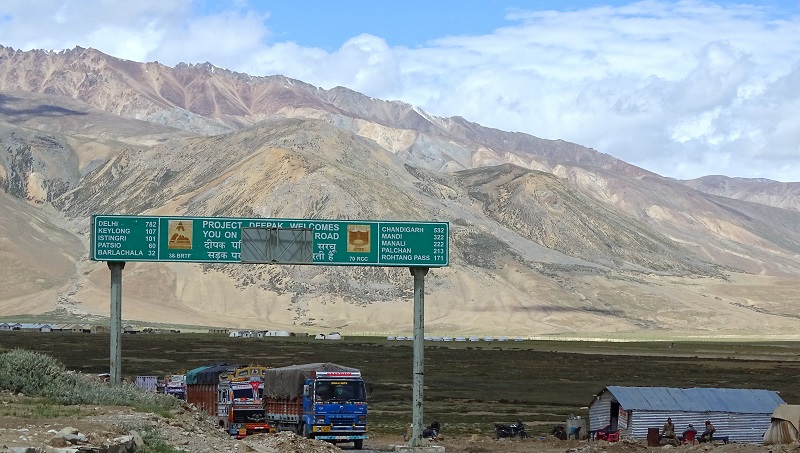
Major Water Crossing in The Spiti Valley Route
Like Ladakh Valley, the Spiti valley is also known as the biker’s paradise. Like Leh-Ladakh, there are two routes to reach the Spiti Valley. The first route is via the Rohtang Pass and Kunzum Pass, and the second route is via Shimla-Reckong Peo -Nako. Although both the course leads to Spiti Valley, they both are renowned for notorious water crossing. Here is a list of water crossings that riders encounter en route their journey to Spiti Valley.
Water Crossing between Gramphu and Chhatru
Gramphu Village act as a tri-point between Leh-Spiti-Manali. Amidst Gramphu and Chhatru, there are 4-5 water crossings, which poses difficulty. This route runs parallel to the Chenab River, and the condition of the road is terrible. When I was on my ride to Spiti Valley, I encountered five water crossings in the 18 kilometer stretch between Gramphu and Chhatru. The road in this section comprises sand, dirt, and rock boulders making the water crossing more challenging.
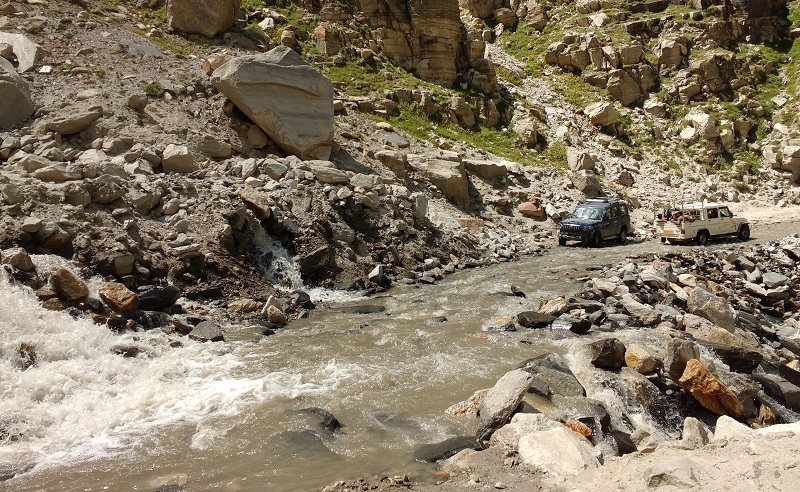
Water Crossing At Chota Dara
Probably the most dangerous water crossing in the entire Spiti and Ladakh Valley ride. The water crossing at Chota Dara is the mother of all water crossings. Although the whole Gramphu-Batal-Kaza road is in a dilapidated condition, it is most terrible at Chota Dara. Moreover, the fast melting snow from the nearby peaks brings a sea of water, making it even harder to cross. During my ride, the water crossing at Chota Dara did the most damage to our bikes and our enthusiasm. While attempting to cross, two of our five bikes broke down. We had to spend two nights in the Chota Dara PWD Rest house, which is a never forgotten experience. I will cover my story of Chota Dara in a separate future article, but you can see the challenges Chota Dara posses by watching the below video.
Watch: Dangerous Water Crossing At Chota Dara In Spiti Valley
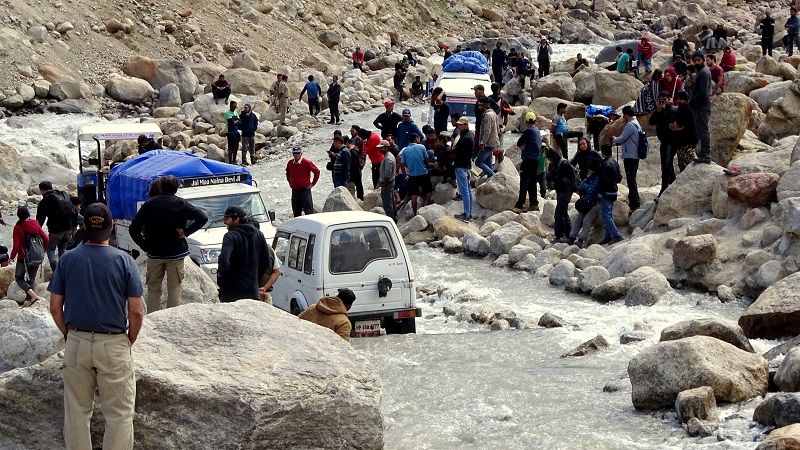
Water Crossing at Malling in Spite Valley
Milling is a small village on the Nako-Kaza route. The village is famous for the dangerous crossing of Malling Nalah. While the road in this stretch is better compared with Batal-Kaza-Route, crossing Malling Nalah requires maneuvering skills, especially in the winters. The Malling Village lies at an elevation of 3600 meters above the sea level, forcing water to remain frozen for most of the year. During summer seasons, the snow melts, but frequent landslides still posses’ challenges. The stretch is the most dangerous on the entire Rampur-Nako-Kaza route, and those who rode on this stretch know about it.
Water Crossing Stretch at Spello
The majority of the road on the Shimla-Kaza route is in excellent condition, and it is one of the finest highway built by the Border Roads Organization in the Himalayan region. Yet, the stretch in and around Spello posses significant challenges to riders. The area is prone to landslides, and when I was riding for Spiti valley, I was stuck for six hours at Spello. A recent landslide and mud blocked the road, and it took six hours for authorities to clear the path. There are a few smaller stretch on the Shimla-Kaza route, but they don’t possess a big challenge as compared to the other water crossings mentioned above.
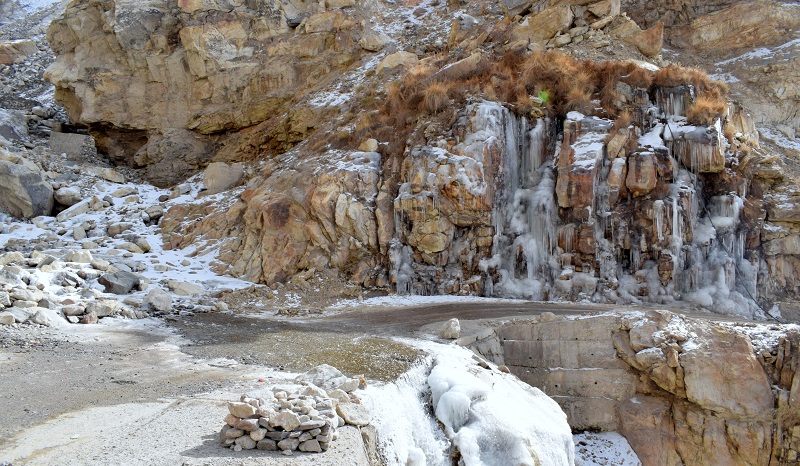
Precautions to Take While Driving Through Water Crossing
The melting of the snow is the primary source of water for all the water crossing en route Ladakh or the Spiti. During the day, the temperature increases, and so does the flow of water. Therefore it is advisable to cross these water crossings as early in the morning. If you delay and try to cross in the afternoon, there is a high probability that these water crossing will be overflowing. They can cause severe damage to your vehicle, and I saw a few in the same situation, but the same rule doesn’t apply to the crossings comprising of snow and black ice. During my ride on Batal-Kaza Route, the Chota Dara damaged two motorcycles and forced us to abandon our trip of Spiti Valley. The water crossing didn’t spare powerful vehicles like a car (2WD) or Tempo Travelers, and they also got stuck.
Water crossings are a part of the ride on almost all the hill roads of India, and even I encountered them during my journey in North-East India. Yet the water crossing in the Himalayan region is far more dangerous and requires more skills compared with any other part of India. I hope this article will provide an insight to all the travelers planning to visit Ladakh or Spiti Valley. In the upcoming article, I will be specifically focusing on one particular water crossing, i.e., the Chota Dara Water Crossing, as it has a significant impact on my memory.

